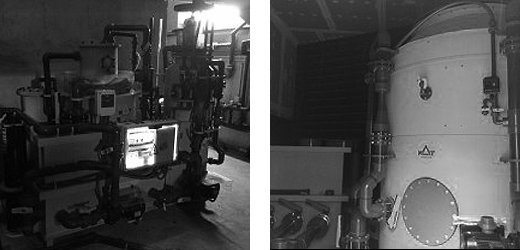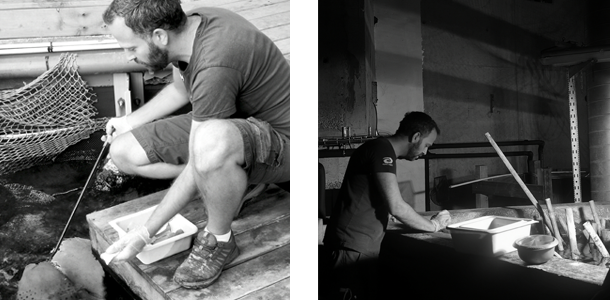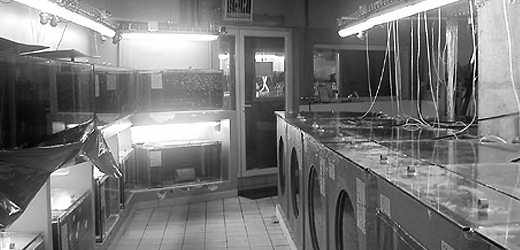TECHNICAL AREA
Another aquarium is behind these aquariums. A professional high skilled team and the last generation technology enable us to take care of more than 4 000 animals, to ensure their health and their welfare.
Temperature, salinity, water quality, lighting, the establishment of an environment of each ecosystem represent all the parameters conditioning the lives of our residents and the work of our biologist, naturally applied. Each species living in the Aquarium of Grand Lyon requires specific care and sometimes extreme delicacy.
FILTRATION
To fill the 44 Aquarium tanks, it takes more than one million litres of water. The supply in sea water is provided every year by about 60 tank trucks of 25 000 litres each and then stored in tanks installed for this purpose. Water purification and filtration are essential for the quality of life of the animals. Indeed, when food remains and feces of each organism degrade biologically, they formed some secondary chemical compounds (ammonium, nitrite and nitrate) extremely harmful for the life of the pool’s guests. Temperature is also controlled and if necessary water is sterilized by ultraviolet light.

FOOD
The good health of an animal depends on good nutrition. That’s why the Aquarium develops meals composed of whole fish or pieces, crabs, mussels, shrimps, living plankton, green beans, broccoli and vitamins.
Naturally, each ecosystem has a specific diet in terms of quality and quantity; this can go from 2 to 8 kg of fish per week for the sharks, and 2 to 3 distributions per day of living brine shrimps for seahorses.

QUARANTINE
The Aquarium has two quarantine rooms, a cold one and a tropical one where all the newcomers are isolated. This approach leads to eliminate the stress caused by transportation, to detect the possible diseases and parasites that these fish could deliver to the other animals and to realize the acclimatization period, especially for food, required before entering exposure. The Quarantine area is also a hospital where sick or injured animals spend their period of convalescence and receive the appropriate treatment. The plan in the future for the Aquarium is to launch some breeding programs in these quarantine area in a special part of them which will be named “nursery”. Currently, births of clownfish, apogons or stingrays have been observed.

LABORATORY
In this laboratory, we weekly analyze the water of all the pool’s aquarium, the pools exposed to the public and also the pools of quarantine. Our biologists check the physico-chimical water composition (salinity, temperature, Ph, even the nitrogenous substances still dissolved in the water). We also produce plankton from animal origin (zooplankton) or plant origin (phytoplankton) used to feed the fry and some specific species. The laboratory is also in charge of checking the pathologies, to study fish diseases and to develop the required treatment, in collaboration with a veterinarian attached to the institution. In this laboratory, we realize necropsies in order to determine the eventually causes of fish death and anticipate epizootics.